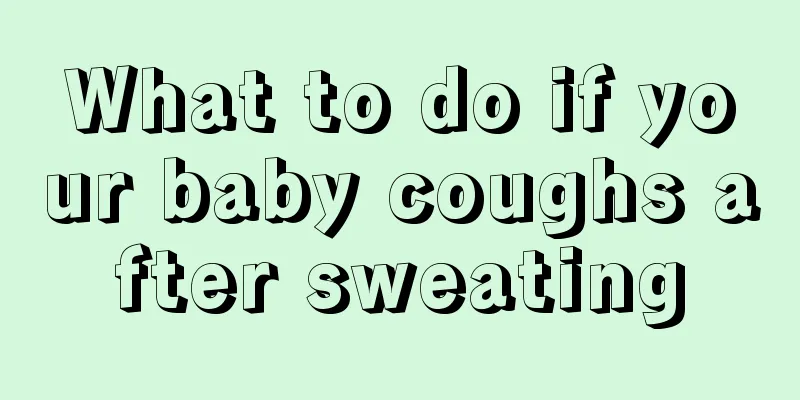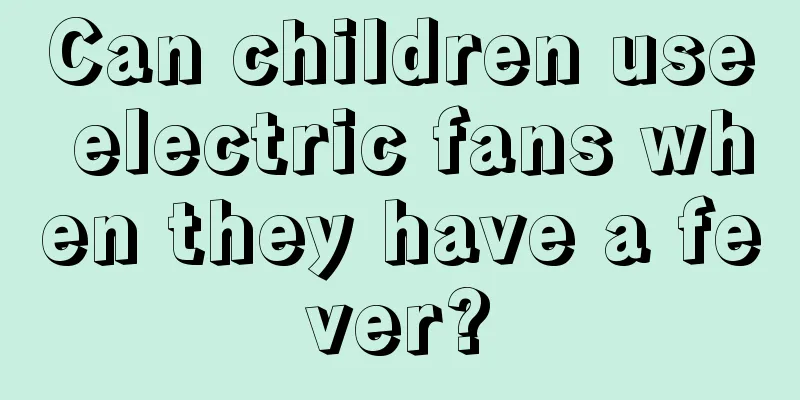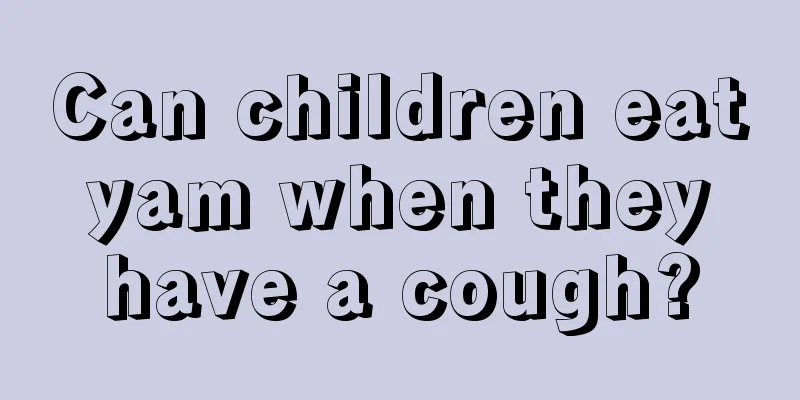What to do if your baby coughs after sweating

|
Many parents will find that their babies will have symptoms of coughing every time they sweat, but they cannot find the real cause of this symptom. Then they can only reduce the number of coughs by reducing their sweating. It is usually related to cold and night sweats. Let the children drink more boiled water, which is mainly to allow them to excrete toxins faster. 1. Reduce the severity of cough and the discomfort caused by cough 1. Adjust posture: adopt a comfortable posture preferred by the patient and make appropriate adjustments based on the treatment principles. Generally, the patient takes the side-lying position with knees bent, semi-sitting position or sitting position. 2. Keep the air fresh and at appropriate temperature and humidity: the temperature should be between 18 and 20 degrees Celsius; the humidity is generally between 40% and 50%; the suitable humidity for patients with upper respiratory tract infection and bronchitis is 80%. 3. Ask the patient to drink appropriate amounts of warm water to moisten the respiratory tract and reduce irritation. 4. Avoid eating irritating foods, such as spicy or gas-producing foods. Reduce exposure to irritants such as smoking, pollen, spices, chemical raw materials, etc. 5. For severe irritating dry cough, give antitussive drugs as prescribed by the doctor and guide the patient to take them correctly to prevent syncope, rib fractures, pneumothorax, etc. People with excessive sputum or the elderly and weak should not use strong cough suppressants to avoid suffocation. (ii) Reduce sputum accumulation and enable sputum to be coughed out smoothly 1. Observe the situation of coughing and sputum, accurately record the nature of sputum, and collect sputum samples in time and correctly to provide reliable basis for diagnosis. 2. Guide students to take deep breaths and cough effectively. Take several deep breaths and cough effectively every 2-4 hours. 3. Assist in expectoration: Turn bedridden patients over and pat their backs regularly. According to the principle of postural drainage, tapping and vibration methods are used to drain sputum from the bronchioles to the trachea to facilitate its discharge. Postural drainage is used for patients with large amounts of sputum such as lung abscess and bronchiectasis. According to the site of disease, a position is adopted that is convenient for drainage of the pulmonary segmental bronchus, so that the sputum in the trachea can be coughed out smoothly through the bronchus and trachea. 4. Replenish nutrition and water. If there are no therapeutic restrictions, drink more than 1500 ml of water every day to achieve the effect of liquefying sputum. Especially for patients with chronic cough and sputum, their calorie consumption increases, so they should ensure the intake of nutrients and eat a high-protein, high-vitamin diet. They can eat small meals frequently depending on the patient's specific situation. 5. Perform nebulization inhalation therapy as prescribed by the doctor, which helps moisten the airways and promotes expectoration. In conjunction with chest X-ray and auscultation results, respiratory therapies such as back tapping and tremor are performed after nebulization treatment. |
<<: Why does a child cough up yellow phlegm?
Recommend
What to do if candy gets stuck in throat
Sugar stuck in the throat is a phenomenon that ha...
Why does a baby have green poop after eating milk powder?
Babies are what we parents need to learn about. N...
What to do if your 15-month-old baby walks unsteadily
What is the reason why children walk unsteadily? ...
Why does my child blink so frequently?
Blinking is a normal physiological reaction of th...
Treatment of roseola in infants
Generally, many children are particularly prone t...
Treatment for newborns who love to laugh while sleeping
Children's physical condition is getting wors...
What to do if your two-year-old baby hits people
Babies are very curious and are willing to imitat...
A three-year-old cannot walk
Children will slowly learn to walk as they grow u...
Why do children yawn all the time?
We all yawn at normal times, and children do the ...
Can a 12-year-old wear a facial mask?
Children have not entered puberty before the age ...
How should appendicitis in children be diagnosed?
Generally, children will have stomach pain. At th...
Is it good or bad for babies to sleep on their stomachs?
After having a baby, perhaps most of the parents&...
What should I do if my toddler has recurring diarrhea?
Diarrhea in young children can be divided into mi...
Several reasons why babies have eye mucus
For a new mother, it is a painful thing to know t...
At what age is it normal for children to lose their teeth?
The growth and development of children and their ...









